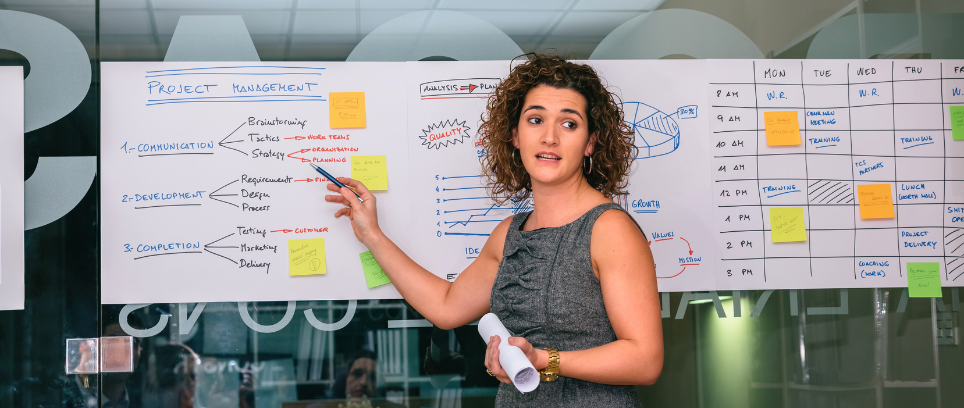What is Project Management?
Project management is the planning and organization of a company’s resources to execute a specific task, event, or duty. This may involve a single project or an ongoing activity, and resources include personnel, finances, technology, and intellectual property. Effective project management is critical to achieving successful outcomes across diverse industries, from construction and engineering to IT and healthcare.
Key Components of Project Management
At a fundamental level, project management involves planning, initiation, execution, monitoring, and closing of a project. This organized approach ensures projects stay on track, within budget, and aligned with organizational objectives.
Types of Project Management
Various project management methodologies have been developed to cater to different project needs and industries. Common methodologies include:
1. Waterfall Project Management
Waterfall project management is a linear and sequential approach where each task must be completed before the next one starts. Known for its structured framework, it emphasizes task order and timeline. Waterfall is often used in industries like construction, where each phase is heavily dependent on the previous one.
2. Agile Project Management
Agile project management, originating in software development, is an iterative method emphasizing flexibility, customer value, and team collaboration. Agile projects are divided into smaller segments or sprints, allowing teams to work concurrently and make adjustments as needed.
3. Lean Project Management
The Lean approach focuses on maximizing value and minimizing waste. In Lean project management, resources are allocated solely to tasks that contribute to the project’s objectives, enhancing efficiency. Commonly used in manufacturing, it’s valuable for projects aiming to streamline processes and reduce resource use.
4. Kanban Project Management
Kanban is a visual project management system designed to improve workflow. Using a Kanban board, tasks are represented as cards that move through different stages (e.g., “To Do,” “In Progress,” “Done”), promoting transparency and real-time updates on task progress.
5. Six Sigma Project Management
While more of a process improvement method, Six Sigma is used to reduce defects and enhance quality through data-driven analysis. The DMAIC process (Define, Measure, Analyze, Improve, Control) helps identify and mitigate process inefficiencies.
6. Scrum Project Management
Scrum is an agile framework that breaks down projects into “sprints,” typically one to four weeks long. This framework fosters team collaboration and frequent feedback, with daily stand-up meetings to discuss progress and challenges. Scrum promotes incremental progress toward a final product.

Understanding the Project Management Lifecycle
The project management lifecycle consists of five main stages that guide a project from inception to completion.
Phase 1: Initiation
In the initiation phase, project goals, scope, and objectives are defined. A project proposal or feasibility study is often conducted, assessing if the project aligns with organizational priorities and stakeholder needs.
Phase 2: Planning
Planning is the blueprint phase, where the project is broken down into tasks. Key elements include resource allocation, risk management, and timeline creation. Planning tools like Gantt charts or PERT diagrams are frequently used to visualize task dependencies and timelines.
Phase 3: Execution
Execution is the action phase, where team members complete assigned tasks and create project deliverables. This stage involves active team collaboration, resource allocation, and quality checks to ensure that work aligns with standards.
Phase 4: Monitoring
During monitoring, project managers track progress against the plan, addressing issues and making adjustments as needed. Change management processes may be applied to handle shifts in project scope, timelines, or resources.
Phase 5: Closing
The closing phase wraps up the project. Deliverables are handed over, and any remaining administrative tasks, such as final budget reconciliation, are completed. Many projects end with a review of lessons learned, providing insights for future initiatives.
Example of Project Management in Action
Consider a project manager tasked with developing a new software product. They start by defining the project’s scope, assigning tasks to team members like developers, technical writers, and quality assurance specialists. The project manager then creates a schedule and budget, monitoring each stage to ensure the project remains on track. Visualization tools like Gantt charts may be used to represent task timelines, and collaboration platforms keep everyone aligned.
Essential Project Management Tools
A variety of tools support project management by organizing tasks, facilitating communication, and tracking progress.
- Project Management Software: Tools like Microsoft Project, Asana, or Trello help teams manage tasks, timelines, and dependencies digitally.
- Communication Tools: Platforms like Slack or Microsoft Teams allow for real-time communication, file sharing, and video calls.
- Document Management Systems: Google Drive, SharePoint, and Dropbox provide centralized access to project documents.
- Time-Tracking Tools: Tools like Harvest track time spent on tasks, helping to monitor productivity and billable hours.
- Risk Management Tools: Tools like Risk Register and Monte Carlo simulations help identify and analyze potential project risks.

Project Management vs. Program Management
While project management focuses on specific initiatives, program management oversees a series of related projects aimed at achieving broader organizational goals. Program managers ensure that individual projects align with strategic objectives and that resources are allocated efficiently across projects.
Why Project Management Matters
Project management is vital for meeting project goals and organizational objectives. By breaking down complex tasks into manageable steps, project management keeps teams on track, within budget, and aligned with company strategy. Effective project management drives success across all industries, fostering collaboration and efficiency to bring projects to fruition.
Common Project Types
A typical example of a project might be product development, involving several departments and specialists. Project managers help coordinate each team, from design to marketing, ensuring a seamless transition through stages and timely project delivery.
Characteristics of a Strong Project Plan
A good project plan provides clear communication and detailed tasks, resources, and timelines. Visual aids, such as Gantt charts, enhance clarity by showing each project phase and its timeline, ensuring that all teams understand their responsibilities and the project’s overall progress.


